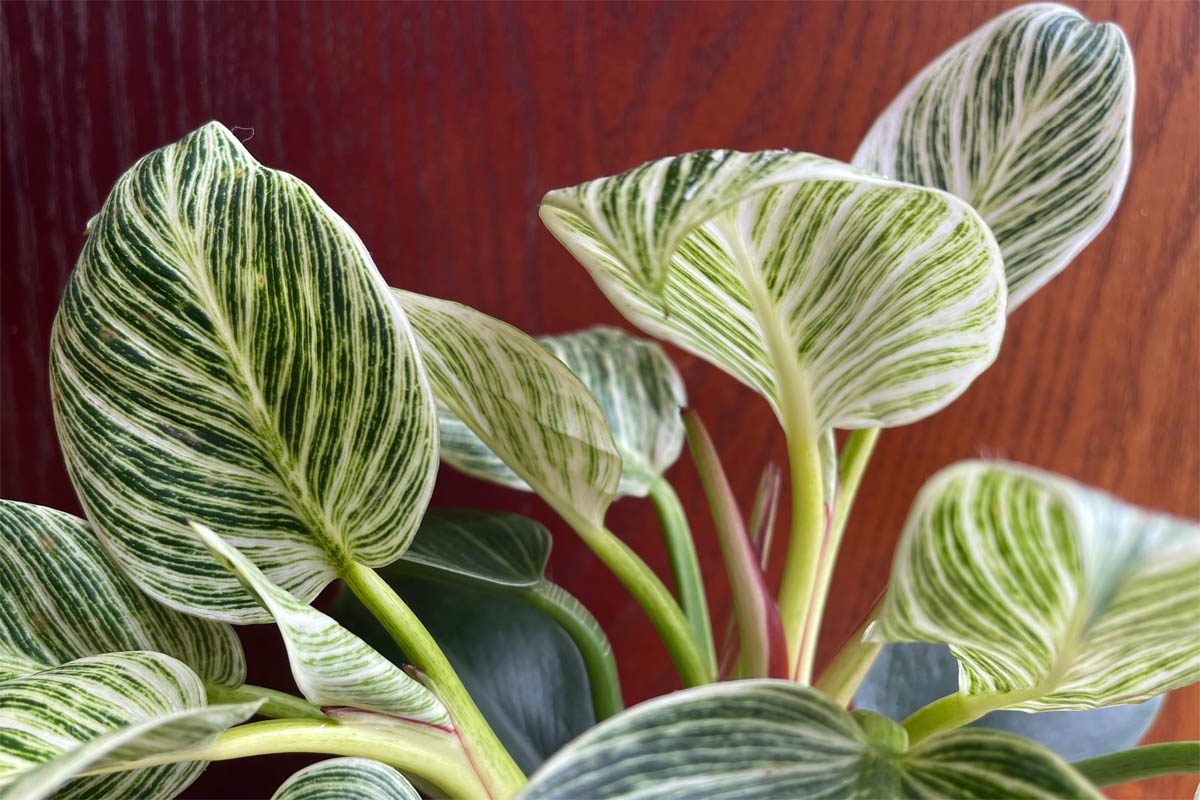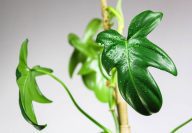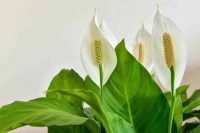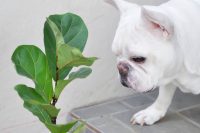Philodendron birkin is toxic to dogs. The toxic principle is insoluble calcium oxalate crystals that penetrate the delicate tissues of the mouth and throat causing intense pain and burning.
What is Philodendron birkin?
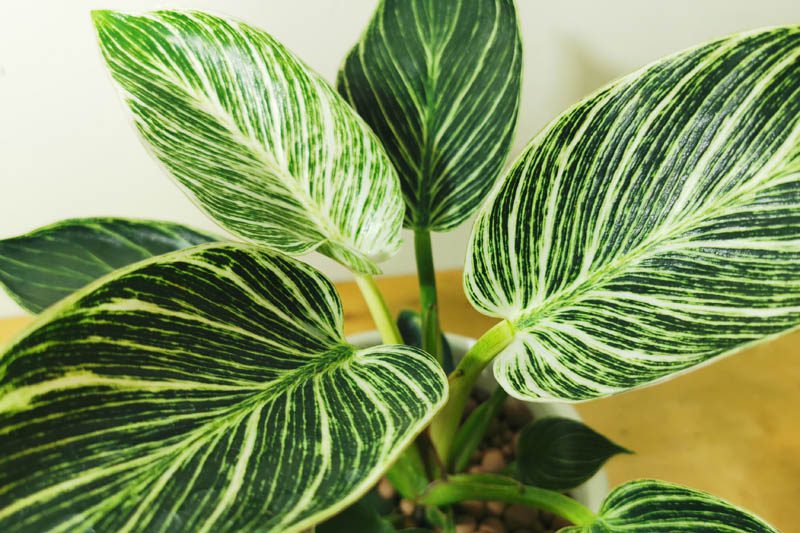
| Family | Araceae |
| Botanical name | Philodendron birkin |
| Common names | Philodendron birkin, White wave, Philodendron white wave |
| Toxicity | Toxic to dogs |
| Toxic parts | All parts |
| Toxic principle | Insoluble calcium oxalate crystals |
| Severity | Mild to moderate |
Also known as ‘white wave‘, Philodendron birkin is an ornamental perennial with deep green foliage and a creamy white wave pattern. This unique feature is a mutation of Philodendron Rojo Congo, which resulted in variegated white or cream lines on the leaves. P. birkin was named after the famous Hermes ‘Birkin’ handbag, which itself is named after singer Jane Birkin.
P. birkin is a slow-growing, compact and low-maintenance plant, making it the ideal plant for the novice. Its preferred location is bright, indirect light. Provide well-draining soil and water when the top 2 cm is dry.
Toxic principles
The toxic principles are insoluble calcium oxalate crystals known as raphides. These needle-sharp crystals known are located inside specialised cells known as idioblasts. When any part of the plant is damaged, raphides are ejected into the delicate oral mucosa causing intense pain and burning.
The University of California has placed all Spathiphyllum species into toxic categories three and four.
- Oxalates: The juice or sap of these plants contains oxalate crystals. These needle-shaped crystals can irritate the skin, mouth, tongue, and throat, resulting in throat swelling, breathing difficulties, burning pain, and stomach upset. Call the Poison Control Center or your doctor if any of these symptoms appear following ingestion of plants.
- Dermatitis: The juice, sap, or thorns of these plants may cause a skin rash or irritation. Wash the affected area of skin with soap and water as soon as possible after contact. The rashes may be very serious and painful. Call the Poison Control Center or your doctor if symptoms appear following contact with the plants.
Clinical signs
The onset of symptoms is rapid, and in most cases, the pain experienced will cause the dog to stop chewing the plant. Puppies are at increased risk due to their curious nature and tendency to chew, especially when teething.
- Pain
- Acute stomatitis (inflammation of the mouth)
- Burning
- Salivation
- Dysphagia (difficulty swallowing)
- Pawing at the mouth
- Loss of appetite
- Edema of the gums, tongue and pharynx
- Breathing difficulty (rare)
First aid
If it is safe to do so, carefully remove any remaining plant matter from the dog’s mouth and offer a drink of something tasty such as milk to rinse the mouth. Contact your veterinarian or pet poison helpline for advice. If the dog appears otherwise fine, the veterinarian may recommend you closely monitor the dog over the next 24-48 hours and if clinical signs develop, bring the dog in for treatment.
Treatment
The goal of treatment is to prevent any further absorption and manage clinical signs as there is no antidote to P. birkin ingestion.
If exposure was recent, the veterinarian will induce vomiting to clear the GI tract, followed by administration of activated charcoal which will bind to any remaining plant matter. Intravenous fluids may be necessary for dogs with prolonged vomiting to treat dehydration and electrolyte imbalances. Antiemetics and gastric protectants can be prescribed for dogs who are vomiting. Analgesia may be prescribed to relieve pain.
Prognosis
The prognosis for dogs who have consumed P. birkin is excellent and most clinical signs will resolve within 24 hours.
Julia is a writer and landscape consultant from Wollongong with a love of horticulture. She had been an avid gardener for over 30 years, collects rare variegated plants and is a home orchardist. Julia is passionate about learning and sharing her knowledge of plant propagation and plant toxicology. Whether it’s giving advice on landscape projects or sharing tips on growing, Julia enjoys helping people make their gardens flourish.
